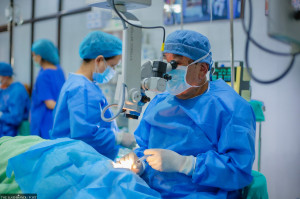Culture & Lifestyle
The importance of burn injury management
Burn surgeon Rojina Shilpakar highlights the need for early intervention in burn injuries and scar care.
Aarya Chand
Burn injuries are among the most severe and painful types of trauma, affecting not only the skin but also the entire body. They can result from various causes, including fire, chemicals, or acid attacks, and lead to long-term physical and emotional challenges.
Immediate medical attention is critical to preventing life-threatening complications, especially in cases involving large surface areas or facial burns. Once the acute phase has passed, proper scar management and emotional support are essential for successful recovery and improving the quality of life for survivors.
Dr Rojina Shilpakar Swar, General and Burn Surgeon, Deputy Medical Director at Sushma Koirala Memorial Hospital for plastic and reconstructive surgery, explains burn injury and treatments for scar management.
What are the primary challenges in scar management and recovery for burn and acid survivors, particularly in terms of treatment and long-term care?
Burn injuries are gruesome and leave scars, except superficial burns (such as sunburn), which heal without scarring. Thus, the focus should be on scar management.
As for challenges, when the injury is in the face, if it is a flame burn, inhalational injuries can pose life-threatening risks. Wound dressing depends on the depth of the burn.
In such cases, primary burn management requires immediate first aid: cooling the burn at room temperature and, preferably, running water from the tap for at least 20-30 minutes to reduce its severity and remove chemicals in acid burns.
Applying basic ointments like Vaseline petroleum jelly, silver sulphadiazine cream, or a collagen dressing can be effective if the burn is superficial.
Once the wound heals, the patient must regularly moisturise and apply sunscreen to the affected areas for life, as the skin cannot produce sweat or sebum like normal skin. We teach patients to perform scar massages and advise them to avoid direct sunlight.
Why is early intervention in burn injury management crucial, and how does it contribute to effective scar care and long-term recovery?
Burn injuries are not just a skin problem; they can affect body systems, with burns covering more than 10% of the body in children or 20% in adults being potentially life-threatening.
Early intervention in burn management is crucial to saving lives and stabilising the patient. Once the patient survives, scar management begins after the wound heals.
Scar care involves using moisturiser, massage techniques, long-term solutions like Vaseline petroleum jelly, and thick cold creams like Nivea, paraffin, and coconut oil to soften scars and provide moisture.
Without proper early wound and scar management, complications like hypertrophied scar, keloid and post-burn contractures may develop.
Do you recommend specific ingredients or products for burn victims’ skincare?
If the burn is superficial and second-degree, we use medicated pure collagen ointments or collagen sheets for better healing. But do not mistake these for commercial collagen creams and collagen masks people use for beautification.
Once the wound is healed, the most important ingredient is non-perfumed moisturiser. The best ones are petroleum jelly, Nivea cream and sunscreen lotion.
What are some common misconceptions about burn injury management, and how can accurate knowledge help prevent complications, especially regarding home remedies versus medical treatments?
According to the World Health Organization, Burn injuries are not just skin problems; they are a neglected crisis affecting overall health, with 55,902 burn injuries and 2,100 deaths reported annually in Nepal. Many people lack knowledge about burn injuries, their management, and referral centres, which contributes to fatalities.
Lifelong scar care, including scar massage and physiotherapy, is essential for survivors or those with minor superficial burns. Simple and cost-effective treatments like petroleum jelly applied 3-4 times daily are recommended. For home remedies, coconut oil or ghee are sufficient, and expensive or fancy treatments are unnecessary.
With the rise of online skincare products on platforms like Amazon or Pretty Click, how can burn and acid survivors identify safe and effective products for their condition?
These are all irrelevant for burn injury survivors; they only need a moisturiser and sunscreen lotion. Severe scars need advanced interventions.
Can you share any successful cases or treatments you've seen in your practice where the combination of skincare and mental health support led to a positive outcome for the patient?
One successful case involved a 16-year-old girl who sustained an acid burn to her face when her friends accidentally threw acid, mistaking it for water. She was brought immediately to our hospital, where we provided early first aid, debridement and collagen dressing, along with mental health support. This resulted in a barely visible scar.
Motivated by her recovery, she helps in our physiotherapy department and continues her college studies.




 8.12°C Kathmandu
8.12°C Kathmandu















